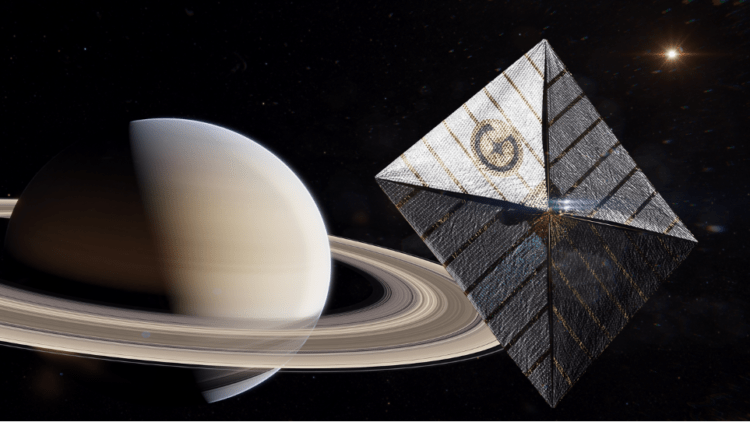Just as sea breezes propel sailboats across the sea on Earth, solar radiation might one day be able to propel spacecraft between the stars. Or at least that’s the hope of French startup Gama.
The aerospace company was founded in 2020 by Louis de Gouyon Matignon, Thibaud Elziere, and Andrew Nutter, whose goal is to develop a low-cost solar sail that would use light as a means of propulsion for spacecraft.
Gama has collected $2 million in funding from the French Public Investment Bank (BPI), the French Space Agency (CNES), and angel investors to demonstrate its technology in space in October.
That mission will see a CubeSat launched on a SpaceX Falcon 9 rocket, after which a 789-square-foot solar sail will deploy at an altitude of 342 miles.
Solar sails are not exactly a new invention. They were first theorized by astronomer Johannes Kepler, who mused about them in a letter to fellow astronomer Galileo Galilei in 1608.
But the first successful deployment of a solar sail didn’t occur until 2010: the IKAROS “space yacht,” a mission by the Japan Aerospace Exploration Agency (JAXA).
That same year, NASA launched NanoSail-D, and in 2019, the space advocacy group Planetary Society launched LightSail 2.
Now multiple organizations apart from Gama are developing new solar sail missions. NASA’s Advanced Composite Solar Sail System (ACS3) will have Illinois-based NanoAvionics design a spacecraft with an 800-square-foot solar sail.
Breakthrough Initiatives’ Breakthrough Starshot mission, which has received $100 million in funding, plans to send a fleet of hundreds of tiny solar sail-powered spacecraft to the star system Alpha Centauri, located 4.7 light-years away.
Read more on Tech Gist Africa:
London-based startup Perlego raises $50 million to expand its business
French tech, Kayrros snaps €40 Million
Staffbase Raises $115M in funding, a Series E that catapults the company’s valuation to $1.1 billion














